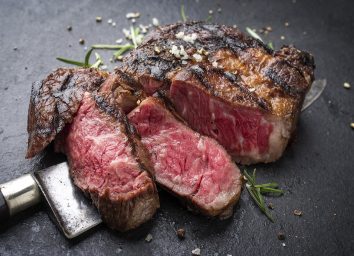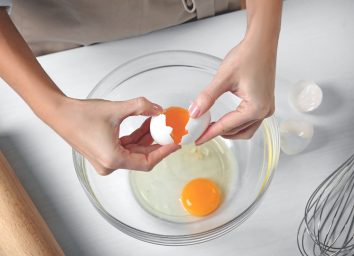12 Popular Restaurant Meals That Are Way Overpriced
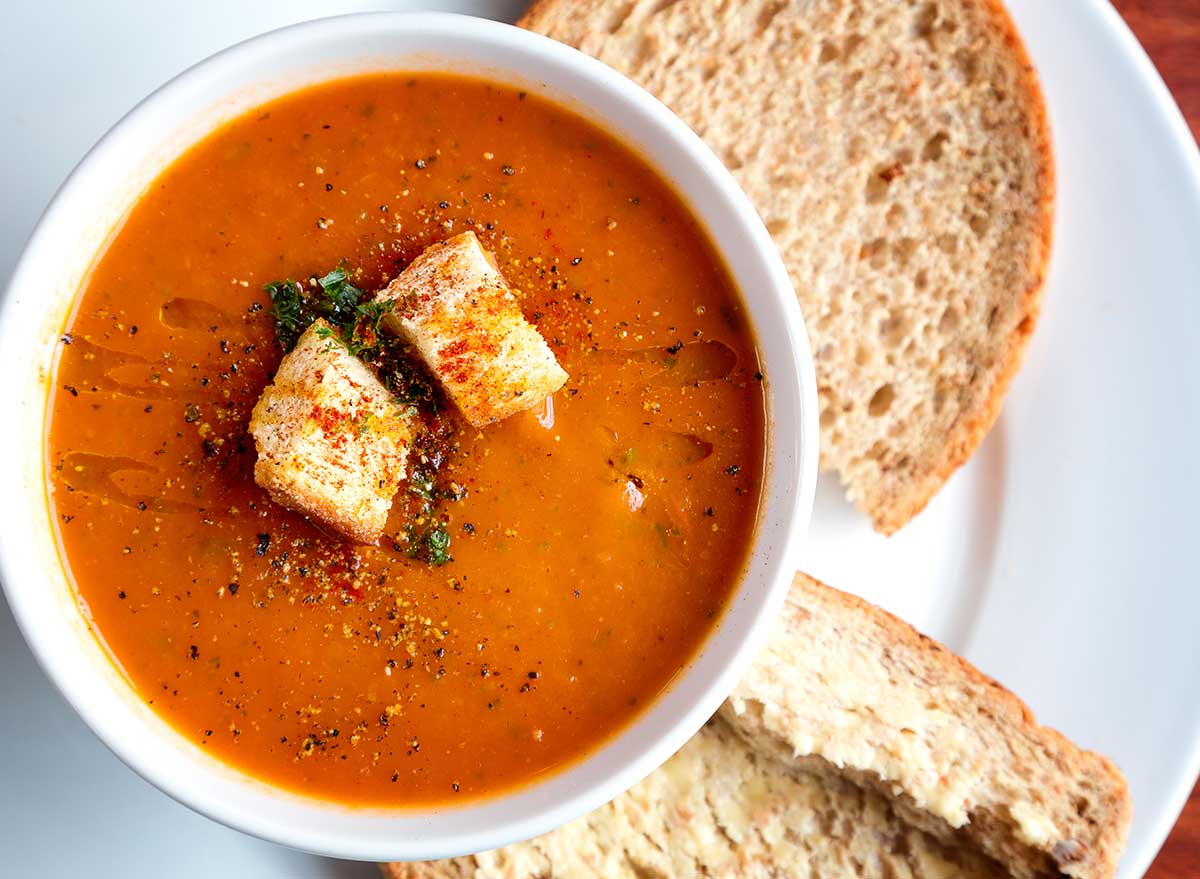
Even though you know deep down that cooking dinner yourself would be easier on your wallet, sometimes the idea of dining out is just too tempting to pass up. And while everyone deserves to treat themselves now and again, you may be shocked to find just how much of a markup there is on certain menu items. Next time you go out to eat, keep a lookout for these highly overpriced dishes—which you can whip up at home for a fraction of the cost.
To be fair, you're not just paying for the food when you go out to eat—you're paying for the whole dining experience. Keep in mind that restaurants are priced to make a profit and there's more to the formula than the cost of ingredients. They also have to take labor costs, electricity, and other utilities to operate the establishment, maintenance of kitchen machinery, and other factors into consideration.
A 2017 study by PlateIQ, which analyzed invoices from more than 1,000 eateries, found that restaurants mark up ingredients by an average of 300%. One thing they found is those simple add-ons can actually carry a hefty premium: For example, adding guac to your burrito means a 285% markup, while sour cream has a 426% markup. Ouch.
With that in mind, frugal foodies should beware of these massively overpriced menu items. And for more restaurant tips, be sure to sign up for our newsletter.
Cheeseburger
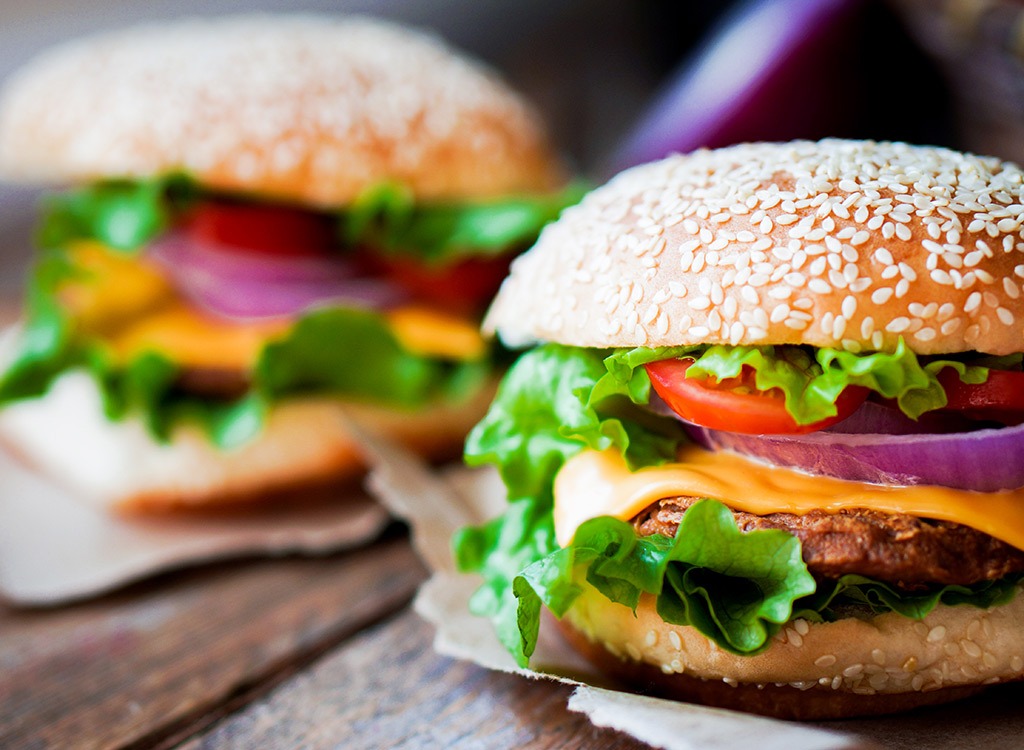
Without a doubt, the cheeseburger is one of the most iconic items you can find at fast-casual and chain restaurants. But be aware that you can make this American classic at home for far cheaper. PlateIQ's study found that a hamburger at a standard restaurant typically costs about $9, but the ingredients only cost $1.86—meaning you're paying a 384% markup. If you want cheese on that burger (which costs the restaurant about 10 cents, but results in an upcharge of $1.50), that simple add-on can raise the markup to a whopping 436%.
Here's the interesting part, though. You'll actually get more bang for your buck if you order your burger at an upscale restaurant. According to PlateIQ, since a high-end restaurant pays more for higher-quality ingredients, the percentage markup is lower (355% for a $14 burger that cost $3.08 to make). Or, you can just fire up the grill at home and whip up a Red-Wine Infused Mushroom Swiss Burger, which boasts a five-star taste but is a cinch to make (and packs fewer calories than a typical restaurant salad, to boot). You could even make one of these 13+ Best Healthy Hamburger Recipes.
Meat Pizza
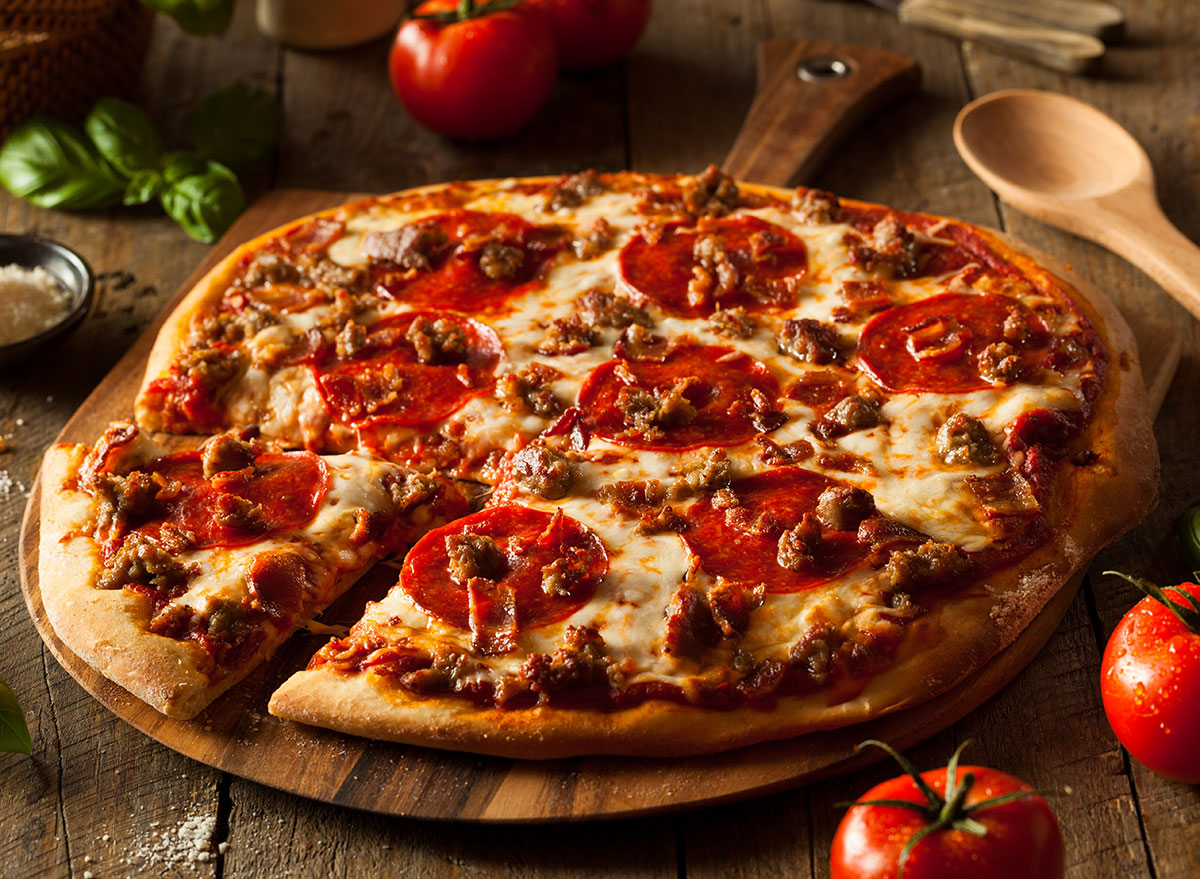
What's a pie without some 'roni, right? But here's the thing: Pizza is already one of the most overpriced menu items, and those meat toppings only make it worse. In fact, according to PlateIQ, while a meat-loaded pizza typically sells for $14, it only costs $1.90 to make—which means it carries a 636% markup.
Speaking of pizza, a plain ol' Margherita pie is another major offender when it comes to markups. PlateIQ's data showed that this menu item only costs about $1.77 to make, but typically retails for $12—that's a 580% difference. The major culprit here is the crust, as yeast and flour only cost less than 1 cent and 20 cents per pie, respectively.
So, why not channel your inner chef and try making a Loaded Pizza With Turkey Pepperoni at home? Not only will you save some serious dough (pun intended), but you'll save hundreds of calories as well, thanks to the whole-grain thin crust and turkey topping alternative.
Omelette
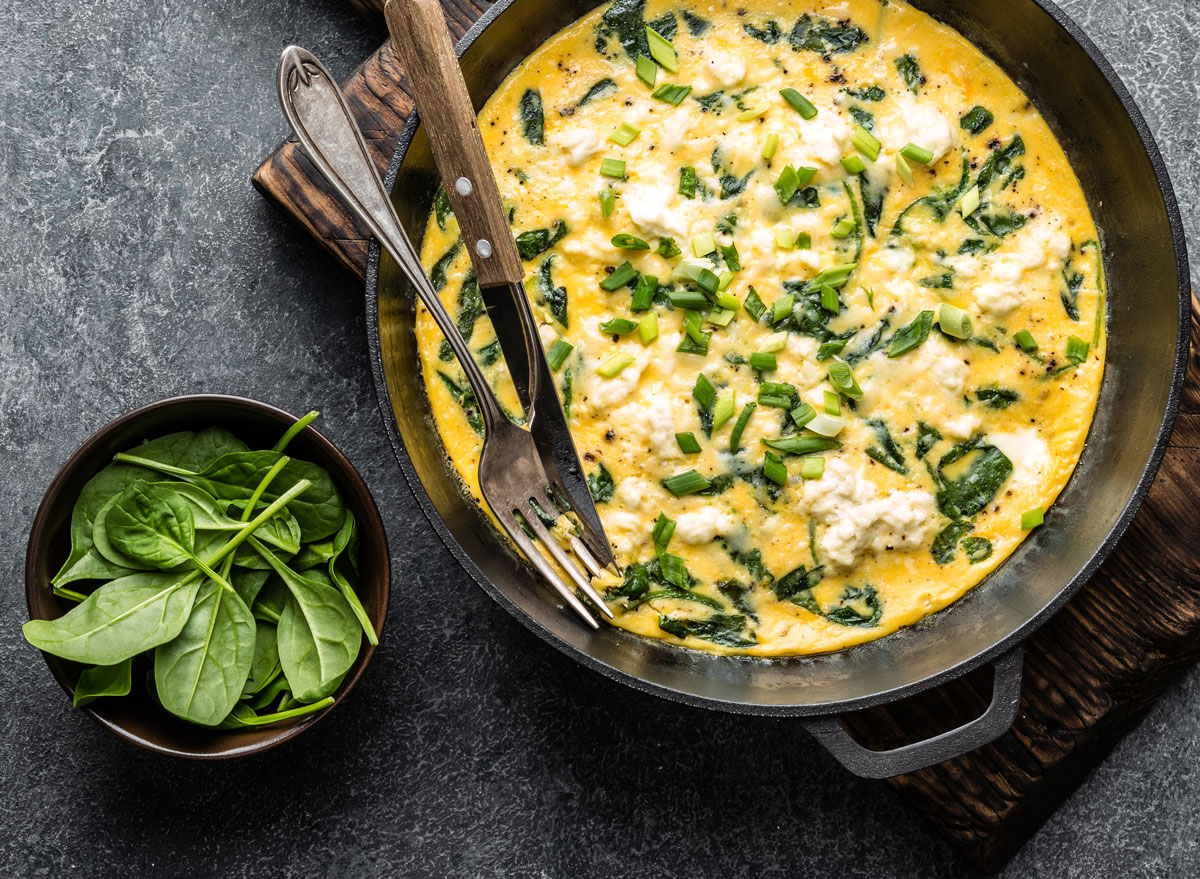
As you likely know from your weekly grocery store runs, the average price of a dozen eggs is $1.54— so it should come as no surprise that omelettes are one of the most overpriced restaurant menu items. PriceIQ examined two popular variations on this dish – the spinach omelette and the Denver omelette (which includes ham and cheese)—and found that both had massive markups. The Denver omelette was the worst offender, however, with a 566% markup as it costs merely $1.35 to make.
Next time you're craving this kind of comfort food to start your day, you can save big on both money and fat content with this Healthier Denver Omelet recipe, which is the perfect dupe for a Diner brunch.
Pancakes

That piping hot stack of pancakes may hit the spot on a lazy Sunday morning, but this is another popular breakfast item that's ridiculously overpriced. A serving of homemade pancakes (whether from a box of Bisquick or from scratch) only costs a measly 23 cents. The reality is, that means the markup is about 2,609% if you consider that you'll pay closer to $6 for pancakes at a restaurant (and often even more, depending on where you get them). It's far more cost-effective to make them at home—and besides, that way you get to stay in your PJs.
Luckily, you can get fluffy, restaurant-quality flapjacks right in your own kitchen with this Copycat Cracker Barrel Pancake recipe.
Chicken Entree
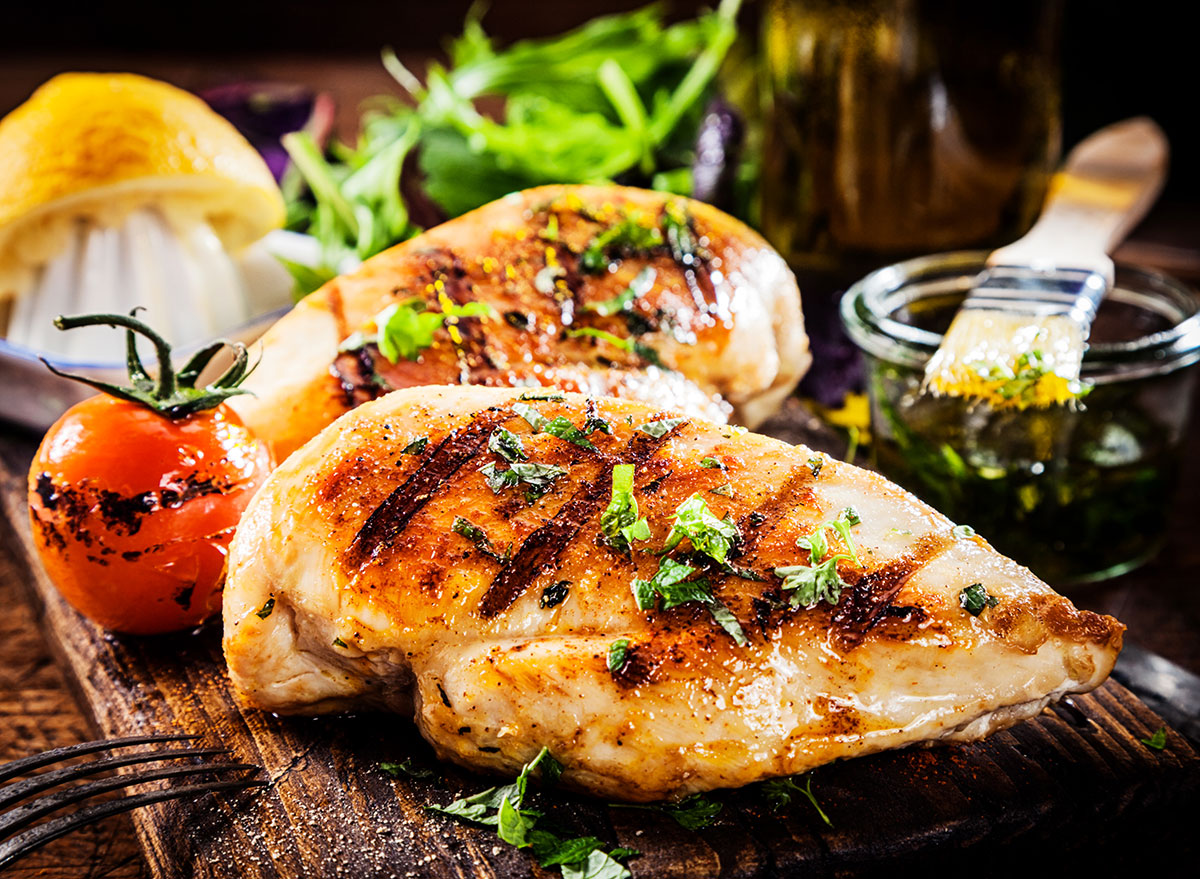
The chicken entree seems like a smart choice when you go out to dinner—it's usually reliable from a taste standpoint, cheaper than a steak, and relatively healthy compared to other dishes on the menu. That said, it can definitely be overpriced, given that boneless chicken breast only costs about $3.18 a pound in the U.S.
That explains why a survey by Food Network Magazine found that chicken is one of the items chefs tend to avoid when they dine out at restaurants. One wrote, "I won't pay $24 for half a chicken breast," while another added, "I want something I can't make myself."
With that in mind, you'd be better off cooking this dish at home—for example, this Chicken Under A Brick recipe requires few ingredients, but is big on flavor.
Pasta
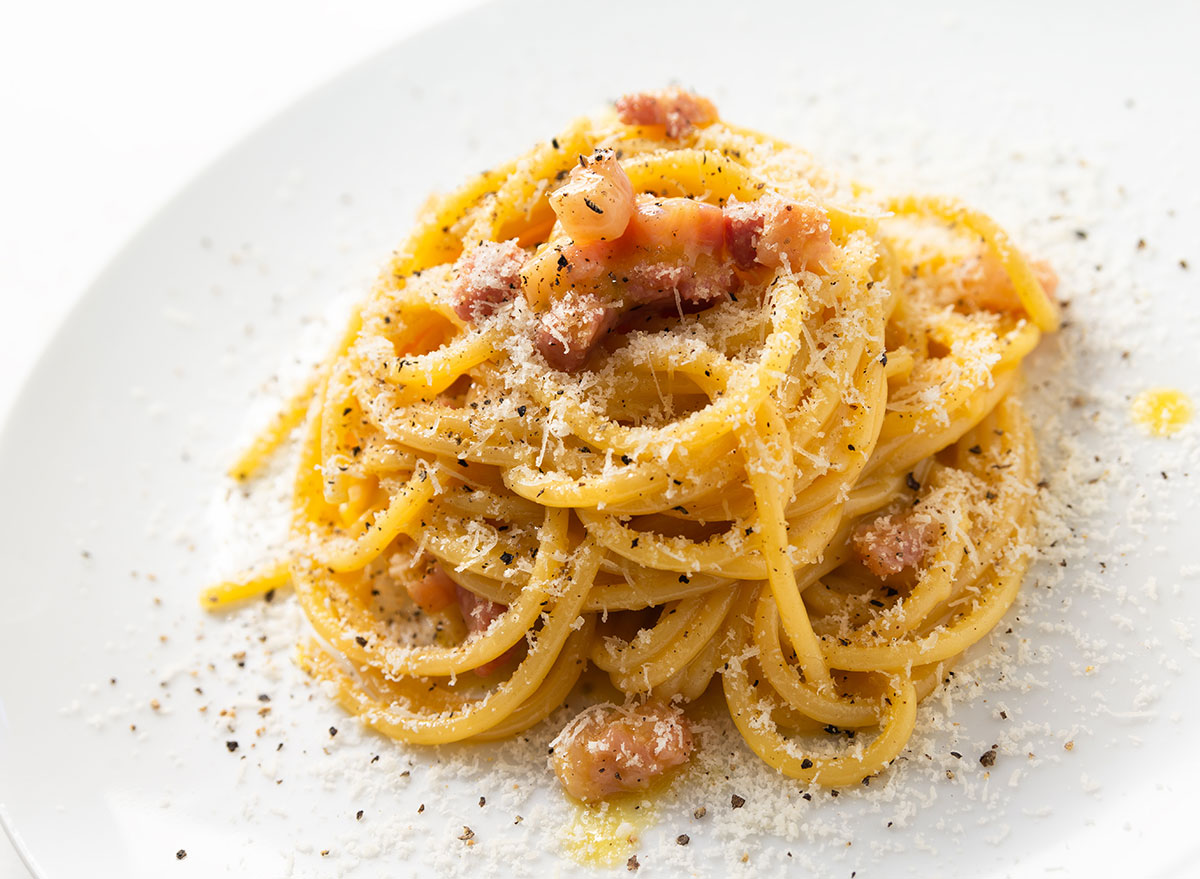
A standard box of pasta only costs about $1-2, but a typical restaurant can charge anywhere from $10-25 for this dish—so it goes without saying that your wallet will thank you if you make it at home rather than ordering it out.
Unless a restaurant is going through the effort of making pasta from scratch, simple pasta dishes like baked ziti or fettuccine alfredo can come with jaw-dropping markups—and when there are extras like olives, capers, or truffle oil, the profit margin increases even further. Restaurant consultant Linda Lipsky told Forbes, "When I was the manager of a restaurant, I wanted the customers to order spaghetti and meatballs because it cost me 90 cents a plate to make and we sold it for $6.75 with salad and bread." In other words, her restaurant's markup was over 700%.
Next time you're craving some comfort food, do your bank account a favor and tackle this skinny Baked Ziti recipe instead of going out—not only is it less expensive, but it'll fill you up without weighing you down.
Edamame
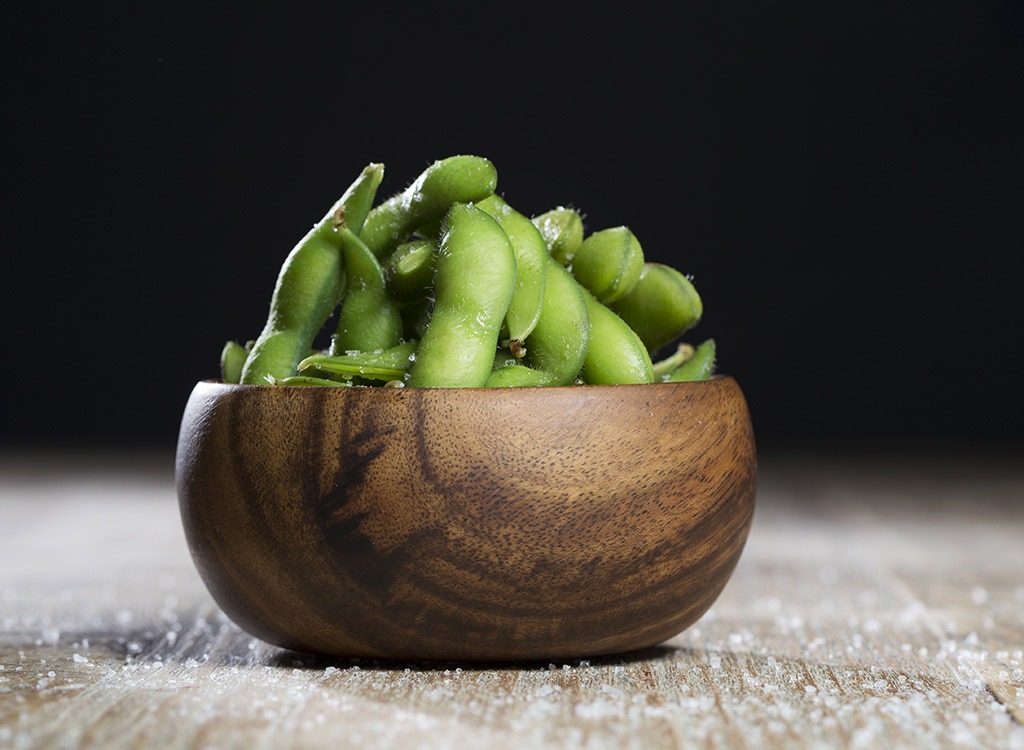
With a hefty dose of omega-3 fatty acids and satiating fiber, edamame is not only a complete protein, but it's also a stellar weight-loss food that supports eye health. Still, you might want to think twice before ordering it out, however, as it only costs a restaurant about $1.95 a pound, and at $6 for an appetizer portion, you're paying a whopping $1,250% markup.
Sound like a ripoff? The good news is that it's super easy to recreate this delicious sushi restaurant staple at home by steaming whole soybean pods and then topping them with a sprinkling of sea salt.
Salad
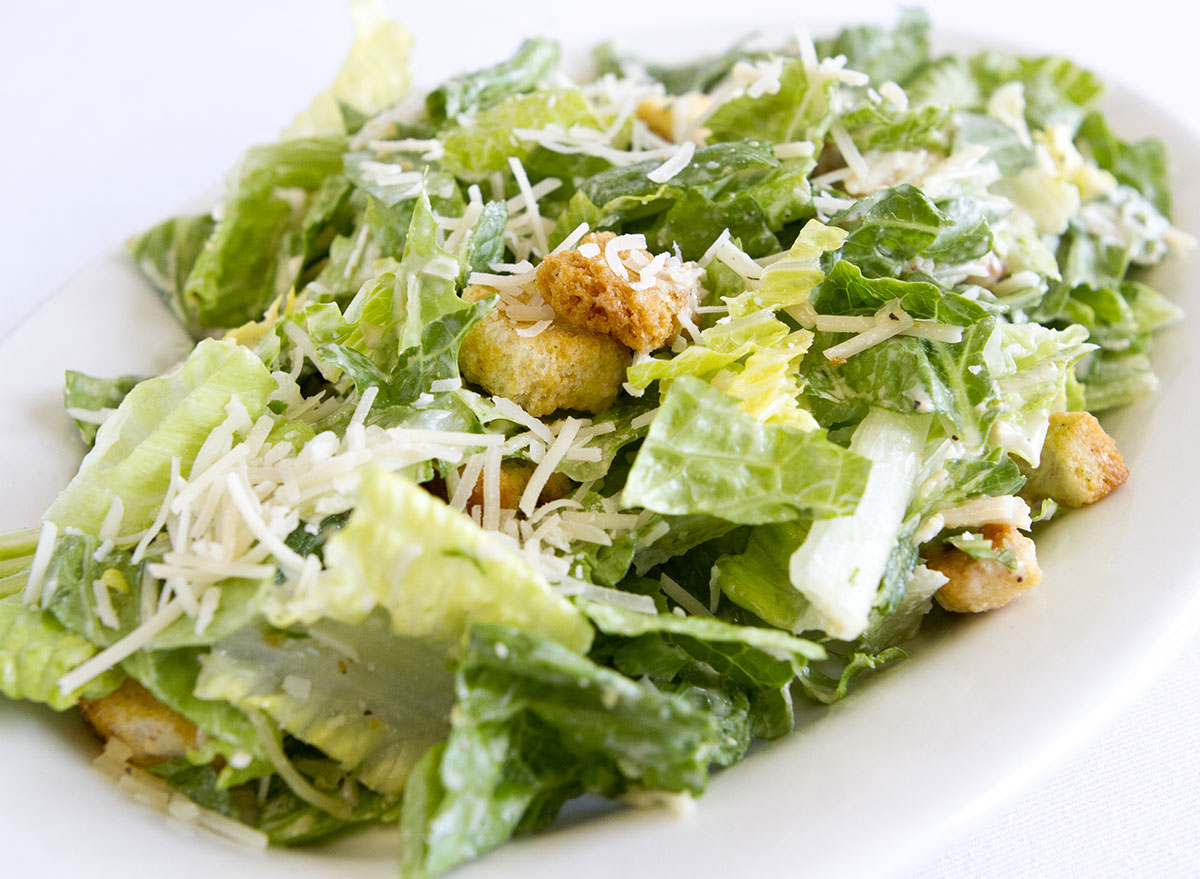
A chicken caesar salad, which is a staple on American menus, is only about five ingredients and doesn't cost much to make—but restaurant markups are high given that the average cost is somewhere between $9 and $15 (and sometimes more).
Another overpriced salad is the standard iceberg wedge. In fact, Peter Chastain, executive chef and owner of California's Prima Ristorante told Reader's Digest that this menu item is often marked up at least 20 times. Not to mention, this is one of the sneakiest calorie bombs on the menu—while a salad may sound like a healthy option, the typical loaded wedge is anything but thanks to the heaping pile of bacon, blue cheese, and creamy dressing.
For an alternative that's lighter on both cost and calories, try this reimagined Grilled Caesar Salad with lighter vinaigrette.
Meat Burrito
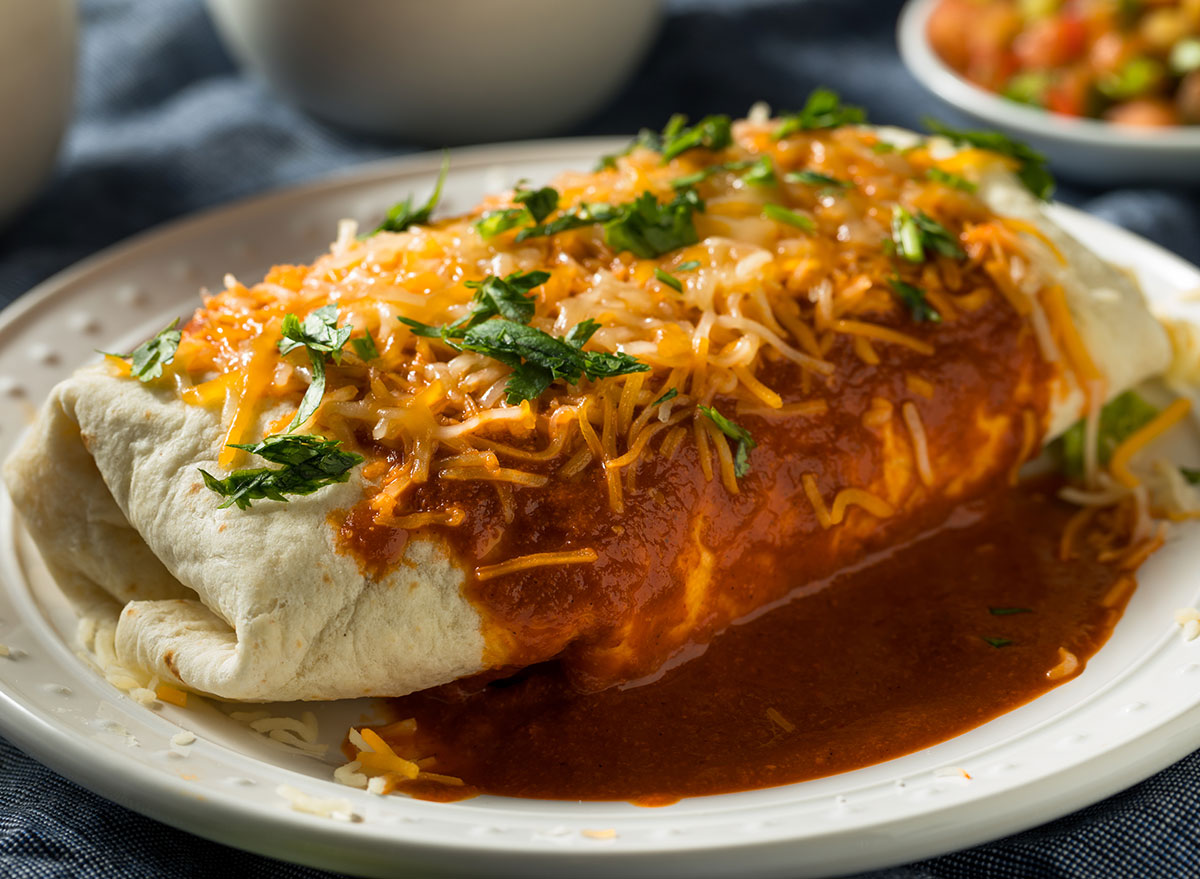
Aside from the meat, cheese, and tortilla, pretty much every other ingredient in a standard carnitas burrito (rice, beans, sour cream, lime, garlic, cilantro, jalapeño) costs less than 20 cents, according to PriceIQ's data. Restaurants pay about $2.02 for all of those ingredients, which means that if you pay the standard $9, you're shelling out 346% more. Who knew this hearty Mexican classic carried such a hefty markup?
By the way, homemade guac only costs about 20 cents per ounce—but adding a scoop to your burrito at a restaurant could tack on up to $2, resulting in a 250% markup.
Luckily, this quick and easy Chicken Fajita Burrito recipe is a budget-friendly alternative you can make at home, and if you're craving that creamy avocado goodness, this Chipotle Guacamole copycat recipe should do the trick.
Salmon
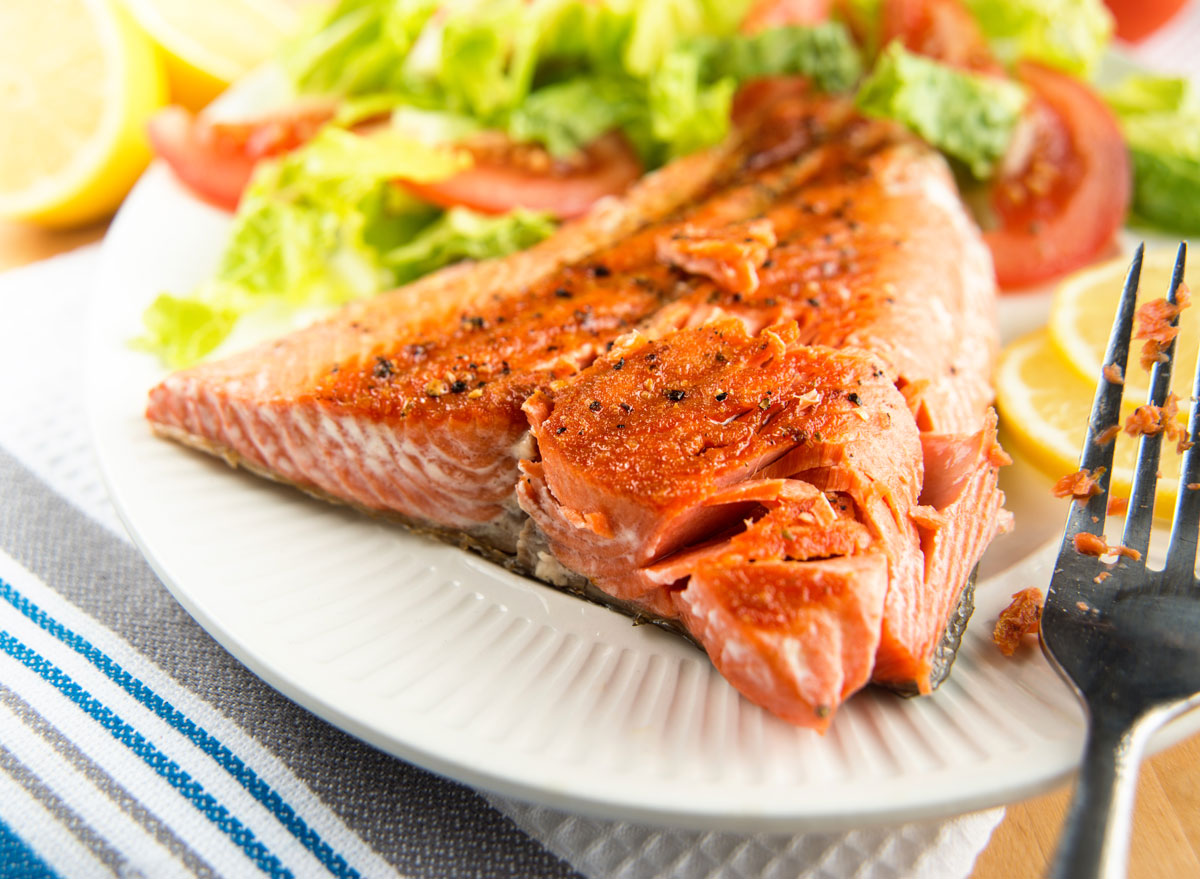
There's nothing like fresh seafood, particularly when it's in season—but unfortunately, fish another item that tends to be overpriced at restaurants—in fact, according to The Wall Street Journal, it only costs about $2.50 a pound wholesale, meaning it's often priced at a whopping 900% markup or more.
Salmon, in particular, tends to be a rip-off. Why? Because very often, you're not getting the quality you paid for—especially when it's not in season. A 2015 report by conservation group Oceana found out that 42% of the samples they tested from restaurants and grocery stores in various states were mislabeled (typically as wild-caught when really they were farm-raised). This was far more common in restaurants than in supermarkets, meaning you're way better off buying your fish at the grocery store counter and cooking it at home.
While we're on the subject of seafood, shellfish is another oft-overpriced menu item. Think of it this way: a pound of shrimp costs about $12-15, but you'll pay almost the same for a shrimp cocktail appetizer at a restaurant that only includes five or so shrimp.
This five-ingredient Chili-Glazed Salmon recipe offers a flavorful way to get your fish fix right at home for a fraction of the cost.
Chicken Tenders
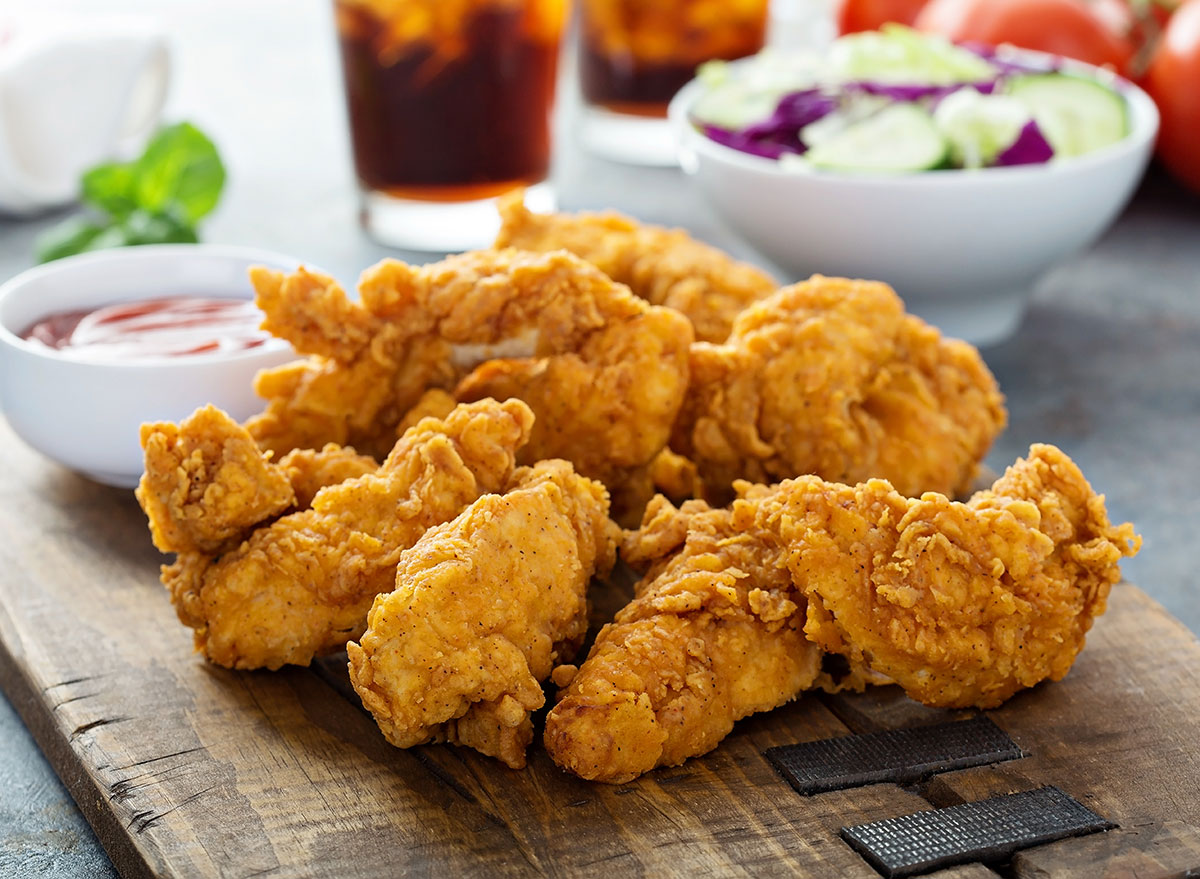
Chicken tenders are a kids' menu staple—and they're also one of the most common items you'll find at sports bars and other casual American restaurants. It makes sense, when you consider that they're one of the most profitable items for dining establishments, according to Pizza Today. After all, the only ingredients you need to make them are chicken, breadcrumbs, and oil.
Luckily, these Oven-Baked Chicken Fingers With Chipotle Honey Mustard are a far more cost-effective option that all ages can enjoy.
Soup
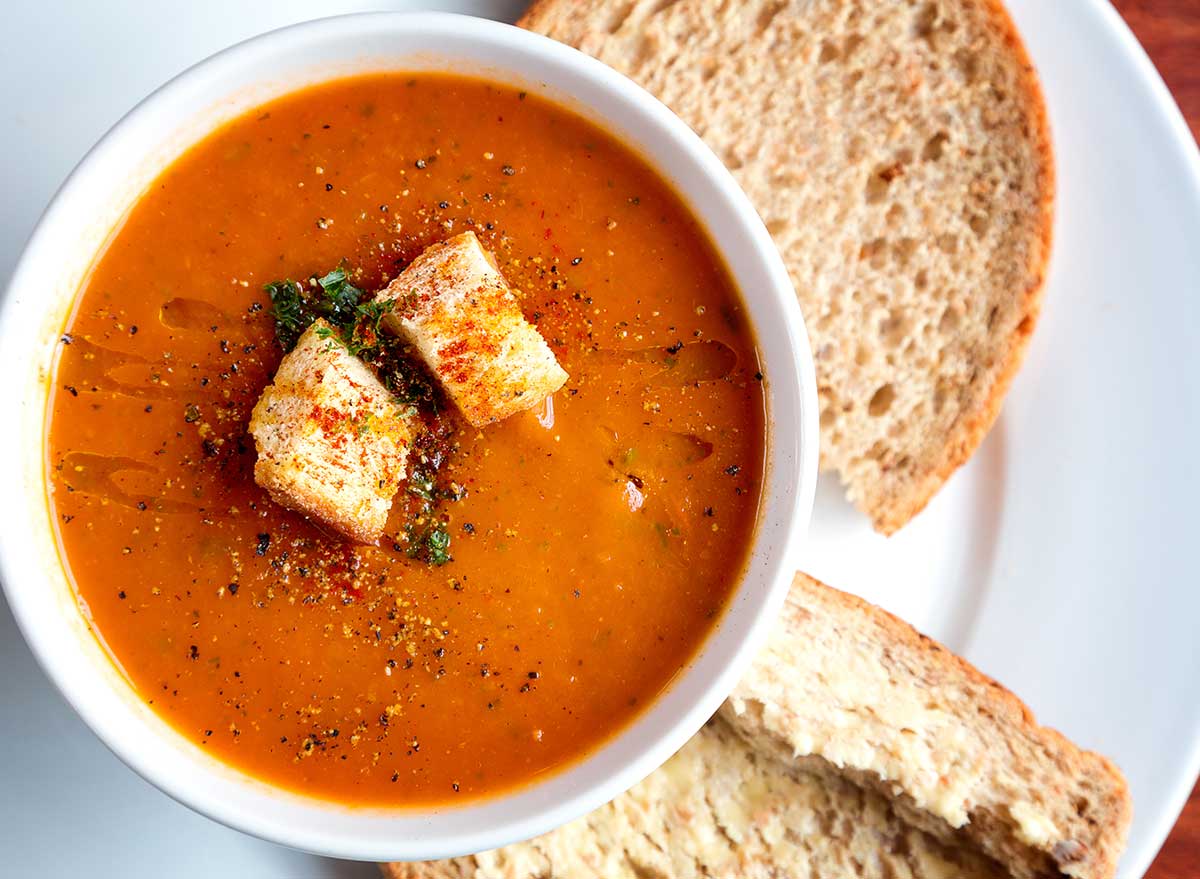
While a bowl of soup may be super comforting on a cold winter's day, this is another item that restaurants make a massive profit off of—in part because the main ingredient is water, and the remaining ingredients are often leftover scraps from other dishes (unused veggies and meat, etc.) that would have otherwise gone to waste. Not only that, but restaurants can make a large vat of soup to feed patrons for an entire day and sell it for $5 a bowl, even though it may have cost less than $1 per bowl to make.
Rather than splurge on an overpriced bowl at your local eatery, try this healthified French Onion Soup recipe—it's only 250 calories per serving, but tastes just as indulgent as a gourmet restaurant's version.

